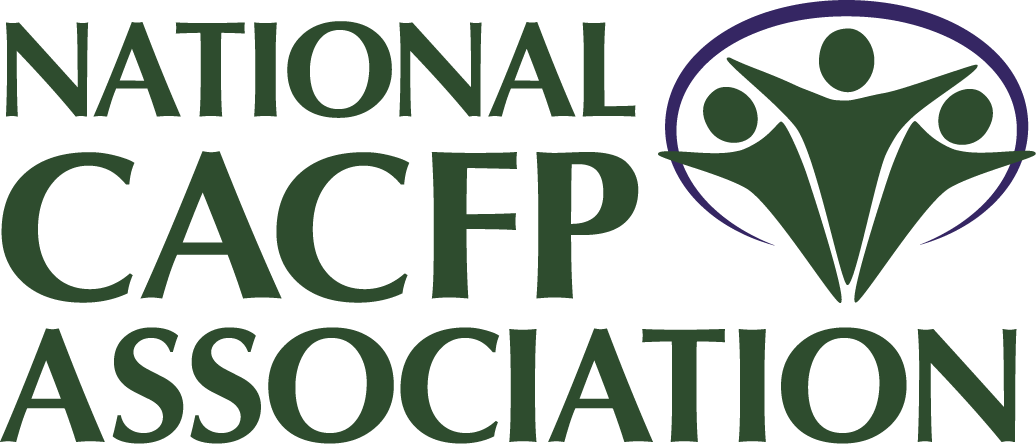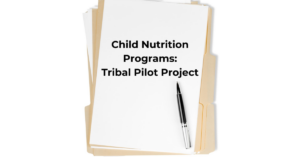Posts Tagged ‘Early Care and Education’
Registered Dietitian Medical Statements
The USDA released a memorandum to clarify the updated regulatory requirement for program operators to accept medical statements from registered dietitians. The change requiring program operators to accept medical statements from registered dietitians must be implemented by July 1, 2025, for school meal programs and Oct. 1, 2025, for CACFP.
Read MoreUSDA Request for Information: CNP Tribal Pilot Project
On December 23, 2024, the USDA Food and Nutrition Service released a request for information (RFI) to inform their development of the Child Nutrition Programs Tribal Pilot Projects, as authorized in the Consolidated Appropriations Act, 2024. The Act provided $2 million for Tribal Pilot Projects that will permit Indian Tribes and/or Tribal organizations to administer Child Nutrition Programs, assuming the roles and responsibilities typically held by State agencies.
Read MoreFeeding Infants in the CACFP: Updated Guidance
USDA updated previous guidance on Feeding Infants in the CACFP. Updates include information on medical statements, substituting vegetables for grains in specific groups, added sugar limits, and tofu and tempeh crediting.
Read MoreGrain Requirements in the CACFP Q&A
The USDA released a memorandum to provide updated guidance on the provisions of the 2024 final rule that apply to the grains requirements in the CACFP, which included adding a definition for whole grain-rich into CACFP regulations; changing product-based limits for breakfast cereals and yogurts from total sugars to added sugars; and updating guidance on substituting vegetables to meet the grains requirements for eligible program operators.
Read MoreOpportunity for States to Access Funding to Purchase Local Food for CACFP
USDA released a Notice of Funding Opportunity on December 10, 2024, for State agencies to access funds to purchase and distribute local foods for schools and CACFP child care providers in their state. USDA has committed $188.6 million specifically for institutions participating in the CACFP. State agencies must submit a proposal in order to access these funds for the schools and CACFP providers in their state and there can only be one application per state. Funds will be awarded through a non-competitive process based on a formula using the meal counts of participants of the CACFP in each State. Cooperative agreements will be for a period of three years from the time of award.
Read MoreFCCH Provider Perception of Increased Pandemic Reimbursement
A survey was administered in the spring of 2023 of licensed California family child care homes (FCCH) to assess the perceived impacts of the increased reimbursement during the Covid-19 pandemic on CACFP participation and anticipated challenges with reinstated tiered rates.
Read MoreWellness Wheel of Self-Care
You can only show up for others, when you take care of yourself. That’s why self-care is so important for CACFP operators who are ensuring that children and adults in care receive nutritious meals. Our partners at Alliance for a Healthier Generation created the Wellness Wheel to provide ideas and action steps for self-care that address five key areas of overall well-being.
Read MoreCentral Texas Food Bank
Most people think food banks only provide food boxes for those in need. However, food banks do so much more and may also sponsor one or more federal nutrition programs, such as the CACFP. While most CACFP sponsoring organizations are only responsible for the administration and oversight of the program at their sponsored sites, food banks often provide the meals for their sponsored sites as well. The Central Texas Food Bank (CTFB) is a great example.
Read MoreThe Power of the Food Program: Food Banks
Most people think food banks only provide food boxes for those in need. However, food banks do so much more and may also sponsor one or more federal nutrition programs, such as the CACFP. While most CACFP sponsoring organizations are only responsible for the administration and oversight of the program at their sponsored sites, food banks often provide the meals for their sponsored sites as well. The Central Texas Food Bank (CTFB) is a great example.
Read MoreAfterschool Supper Participation Increased but Remains Low
Afterschool Snack Programs include the National School Lunch Program (NSLP) and the Child and Adult Care Food Program (CACFP). Through NSLP schools can serve one snack afterschool, however through the CACFP schools and sponsoring organizations are able to serve a snack in addition to a supper. This additional supper is an important opportunity to meet children’s nutritional needs after the school day is over. A report by the Food Research and Action Center (FRAC) found that afterschool supper participation increased from October 2022 to October 2023 by 6%.
Read More








